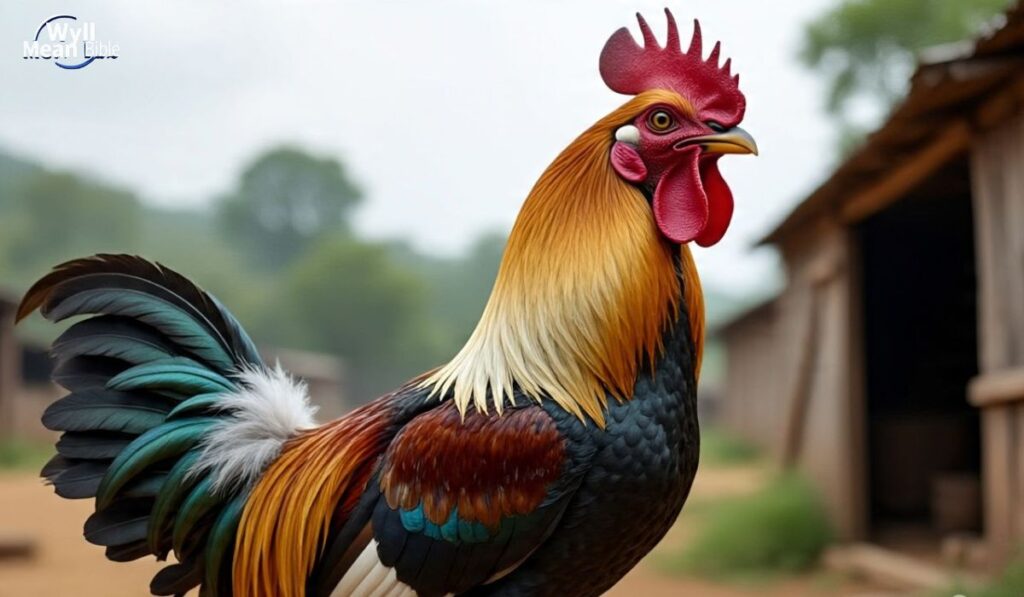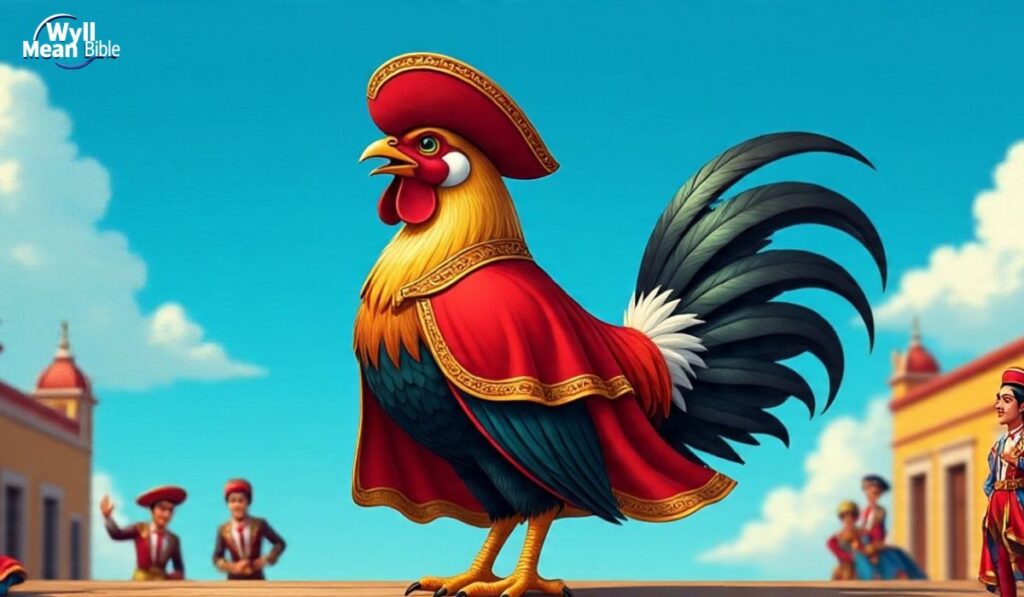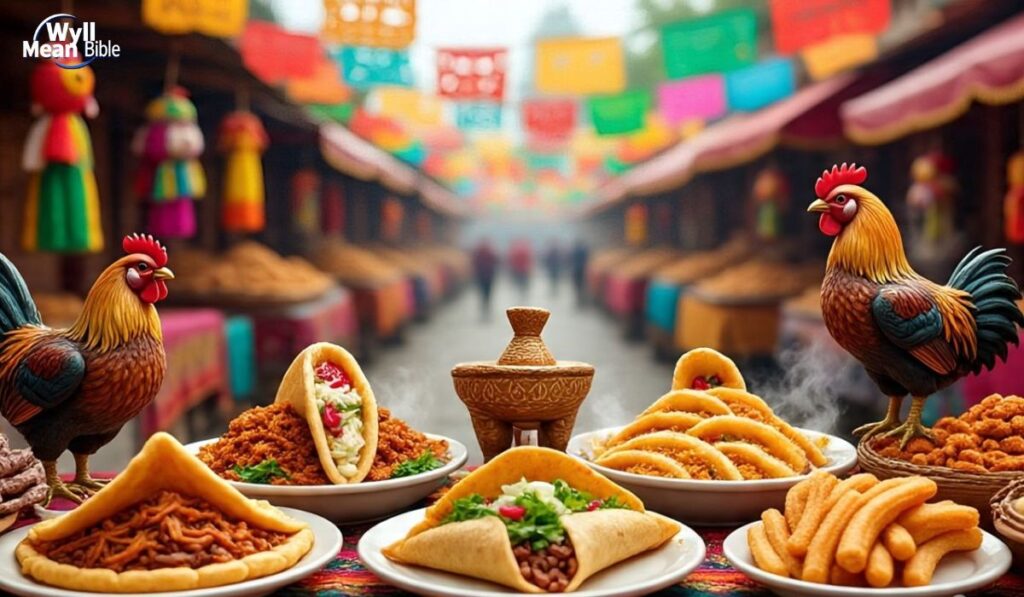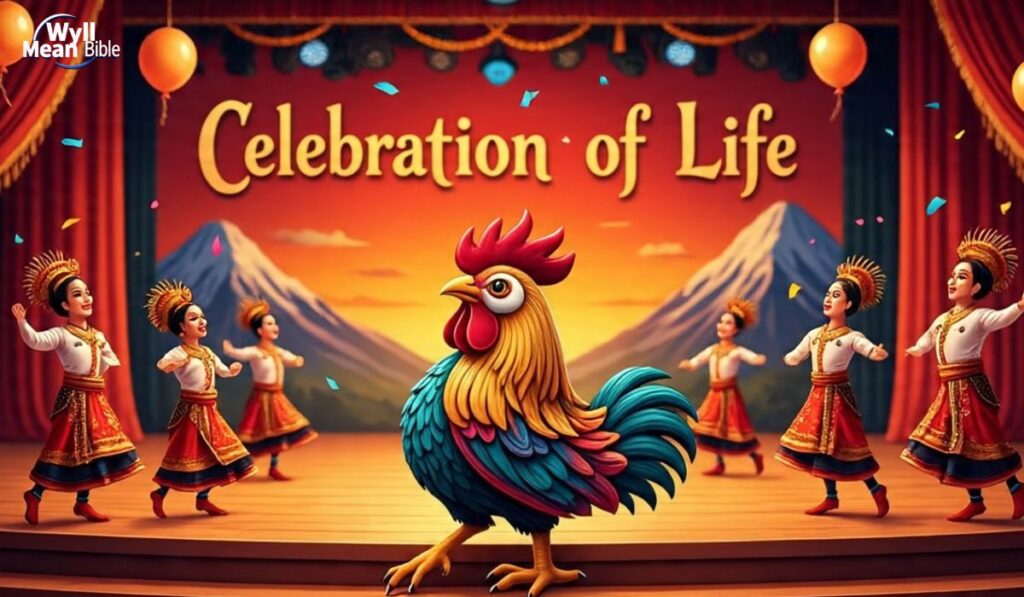El Gallo, meaning “the rooster” in Spanish, has long stood as a cultural icon across Latin America and beyond, symbolizing strength, pride, courage, and the dawn of new beginnings. In 2025, its meaning continues to resonate deeply, blending tradition with modern interpretation.
Whether in folklore, music, art, or daily symbolism, El Gallo represents resilience, vigilance, and the voice of leadership that awakens communities. More than just a farmyard bird, it carries spiritual, cultural, and personal significance, making it a timeless emblem of identity and inspiration.
Literal Meaning of “El Gallo”
The literal meaning of “El Gallo” in Spanish is simply “the rooster,” a male chicken known for its crowing at dawn. On the surface, it refers to the bird itself, but in many cultures, especially in Latin America, the term carries deeper connotations.
Roosters are seen as heralds of the morning, signaling the start of a new day and embodying vigilance, discipline, and renewal. In rural communities, El Gallo has historically played a vital role in daily life by marking time and serving as a natural alarm. While its direct meaning is straightforward, the phrase often extends beyond the farmyard, symbolizing strength, masculinity, and cultural pride.
What Does “El Gallo” Mean?
At its most basic level, “El Gallo” means “the rooster” in English, but its meaning stretches far beyond just identifying a bird. In Spanish-speaking cultures, the rooster is a symbol of energy, alertness, and the promise of a new beginning each morning when it crows at dawn. It represents watchfulness, courage, and readiness to face the challenges of the day.
Beyond its literal sense, calling someone “un gallo” can describe a person who is strong, spirited, and unafraid to stand their ground. In this way, El Gallo embodies not only the physical rooster but also the values of resilience, pride, and determination woven into cultural traditions.
Phonetic Breakdown:
- El Gallo: [el gah-yo] – The “ll” in gallo is often pronounced like a soft “y” sound, though regional accents may vary slightly.
- Accent variations – In some areas, especially parts of Argentina or Uruguay, the “ll” can sound closer to “zh” (like in “measure”), giving it a unique local flavor.
Symbolism and Cultural Significance of El Gallo

The symbolism and cultural significance of El Gallo go far beyond its role as a simple farm animal. Across Latin American and Spanish traditions, the rooster embodies courage, strength, and pride, often seen as a fearless fighter that greets each new day with determination. Its crow at dawn is not only a call to awaken but also a symbol of renewal, vigilance, and the promise of fresh beginnings.
In folklore, proverbs, music, and celebrations, El Gallo represents resilience and masculinity, while also carrying spiritual undertones of protection and moral awareness. This rich blend of meanings makes it a lasting cultural icon that continues to inspire both community identity and personal symbolism.
The Rooster as a Symbol of Strength and Courage
The rooster has long been admired as a symbol of strength and courage, especially in Spanish and Latin American culture. Known for its bold crow at dawn and its readiness to defend its territory, the rooster reflects qualities of bravery, resilience, and confidence.
The Awakening of New Beginnings
Its proud stance and fearless nature make it a powerful emblem of determination, often inspiring people to face challenges head-on with the same unyielding spirit.
“El Gallo” in Folklore and Proverbs
In folklore and everyday sayings, El Gallo often appears as a wise and symbolic figure that teaches lessons about life, pride, and discipline. Roosters are linked to vigilance and honesty, reminding people of values like hard work and resilience through traditional proverbs.
- “El gallo que canta no pelea.” – Those who boast or make noise are often not the ones who take real action.
- “Cuando el gallo canta, la hora está marcada.” – The rooster’s crow is a reliable sign of time, symbolizing order and discipline.
“El Gallo” in Popular Culture

In popular culture, El Gallo is celebrated as a symbol of pride, resilience, and spirit, appearing in music, cinema, literature, and even sports. From iconic ranchera songs like “El Gallo de Oro” to characters in Mexican films and Lucha Libre wrestling, the rooster embodies bravery, confidence, and determination.
Its image is often used to represent fighters, leaders, and individuals who face challenges with boldness and an unshakable spirit.
Music and Songs: The Rooster in Latin Music
In Latin music, the rooster is often used as a metaphor for pride, bravery, and a strong spirit. Ranchers and folk songs frequently highlight El Gallo as a symbol of resilience and determination, capturing the fiery personality of someone who refuses to back down. Its presence in music reflects cultural values of courage, leadership, and confidence.
Famous Lyrics from “El Gallo de Oro”:
In the beloved ranchera song “El Gallo de Oro” by Vicente Fernández, the rooster is portrayed as a fearless and unyielding character. The lyrics, such as “Yo soy el gallo de oro, el que no le teme a nadie” (“I am the golden rooster, the one who fears no one”), highlight its symbolism of strength, defiance, and honor. This song helped cement the rooster as an enduring cultural emblem in Mexican music.
“El Gallo” in Literature and Cinema
In literature and cinema, El Gallo often represents survival, community, and heroism. Mexican stories and films frequently depict the rooster as a figure of resilience, courage, and leadership, reflecting the struggles and triumphs of everyday people. Whether in symbolic roles within novels or as iconic characters in films and Lucha Libre, the rooster continues to embody the spirit of strength and defiance on screen and in storytelling.
“El Gallo” in Mexican Cuisine
In Mexican cuisine, El Gallo holds both practical and cultural importance, as roosters have long been used in traditional dishes that bring families and communities together. One of the most well-known examples is Gallo en Mole, where rooster meat is simmered in a rich, flavorful mole sauce made with chiles, spices, and chocolate, often prepared for special gatherings or festive occasions.
Beyond its taste, the rooster in cooking represents strength, fertility, and abundance, making it not only a source of nourishment but also a symbol of cultural heritage and celebration.
Rooster Dishes in Mexico

Rooster dishes in Mexico are deeply tied to tradition, flavor, and celebration. Unlike everyday chicken meals, rooster meat is often reserved for special occasions because of its richer taste and tougher texture, which lends itself well to slow-cooked recipes.
Dishes like Gallo en Mole or stewed rooster with spices are popular during family gatherings and festivals, symbolizing abundance, strength, and unity. These meals not only showcase Mexico’s culinary creativity but also reflect the rooster’s role as both a provider and a cultural symbol of resilience and vitality.
Gallo en Mole Recipe (Simplified):
- Ingredients: Rooster meat, mole paste, chicken stock, onions, garlic, sesame seeds, and a touch of chocolate for richness.
- Preparation: The rooster is slow-cooked in a deep, flavorful mole sauce made from roasted chiles and spices, creating a hearty, festive dish.
Festivals and Rooster Feasts
In many rural parts of Mexico, roosters are at the heart of community celebrations, often prepared in traditional dishes for family feasts and festivals. These occasions highlight the rooster as a symbol of fertility, strength, and prosperity, while also honoring its role in cultural heritage and communal unity.
El Gallo in Mexican Wrestling (Lucha Libre)
In Lucha Libre, the rooster is embraced as a powerful symbol of courage and defiance. Wrestlers often take on the persona of El Gallo or similar rooster-inspired names, embodying its fearless, combative nature in the ring.
Mascot and Symbol of Fighters
The rooster’s proud stance and fighting spirit make it a natural mascot for wrestlers, symbolizing toughness and determination. Fighters adopt its traits to project confidence and resilience, inspiring fans with its bold imagery.
Iconography in Lucha Libre
Rooster-inspired masks, costumes, and stage names are common in Lucha Libre, reinforcing the image of the rooster as a fierce competitor. This iconography ties the sport to cultural roots while creating a vivid, dramatic spectacle.
“El Gallo” as a Metaphor
Beyond sports and tradition, El Gallo often works as a metaphor for someone who is strong, spirited, and unafraid of challenges. It reflects confidence and readiness to fight for one’s beliefs or goals.
The Rooster as a Fighter
In everyday Spanish expressions, calling someone “un gallo” means they are a fighter at heart—stubborn, bold, and determined. Just like the rooster defends its territory, the phrase celebrates resilience and bravery in facing life’s struggles.
Popular Phrases and Idioms Involving “El Gallo”
- A gallear” – To show off or act proudly, much like a rooster strutting around with confidence.
- “Gallo de pelea” – A fighting rooster; used to describe someone brave, combative, and unwilling to back down.
El Gallo in Religion and Spirituality
In religious and spiritual contexts, El Gallo is often seen as a symbol of vigilance, moral awareness, and divine guidance. Its crow at dawn is viewed as a reminder of renewal and the importance of staying spiritually alert.
The Rooster in Catholic Iconography
Within Catholic tradition, the rooster holds special meaning due to the biblical account of Peter’s denial of Christ. The rooster’s crow became a symbol of repentance, warning, and the need for faithfulness.
Spiritual Significance of El Gallo
Spiritually, El Gallo represents watchfulness, protection, and awakening. Its early morning call is often interpreted as a divine sign to remain faithful, hopeful, and prepared for new beginnings.
The Role of “El Gallo” in Festivals and Traditions
In cultural traditions, the rooster plays a central role in festivals, where it is honored for its connection to strength, fertility, and community life. These celebrations keep alive its symbolic presence in daily culture.
Festivals Honoring the Rooster
Some regions celebrate the Día del Gallo (Rooster Day), where music, food, and rituals pay tribute to the rooster’s importance in rural life, blending symbolism with communal joy.
Rooster Symbolism in Cultural Celebrations

Roosters often appear in decorations, dances, and rituals during festivals, symbolizing resilience, renewal, and a link to ancestral heritage that continues to inspire communities.
Global Perspectives on “El Gallo”
While deeply rooted in Latin American culture, rooster symbolism spans the globe. In France, it serves as a national emblem of liberty; in China, it represents bravery and confidence in the zodiac, showing its universal significance.
Rooster Symbolism Worldwide
Across the world, the rooster is celebrated as a universal symbol of bravery, renewal, and vitality. Different cultures interpret its qualities uniquely, but it consistently represents courage, vigilance, and the promise of a new day.
- France: The rooster is a national emblem, symbolizing liberty, pride, and resilience.
- China: In the zodiac, the rooster stands for bravery, confidence, and resourcefulness.
Conclusion
In 2025, El Gallo continues to stand as a powerful cultural icon, weaving together history, tradition, and timeless symbolism. From its role in music, folklore, and cuisine to its presence in religion, festivals, and even sports, the rooster embodies courage, resilience, and the spirit of renewal.
More than just a bird, El Gallo represents strength in facing challenges, pride in cultural identity, and hope for new beginnings. Its enduring significance reminds us that this vibrant symbol is not only part of the past but also a living emblem that continues to inspire communities and individuals today.

Muhammad Shoaib is an expert writer in Bible meaning, quotes, bible, Prayers, and pick-up lines, known for crafting creative, catchy, and SEO-friendly content that connects and captivates audiences.





